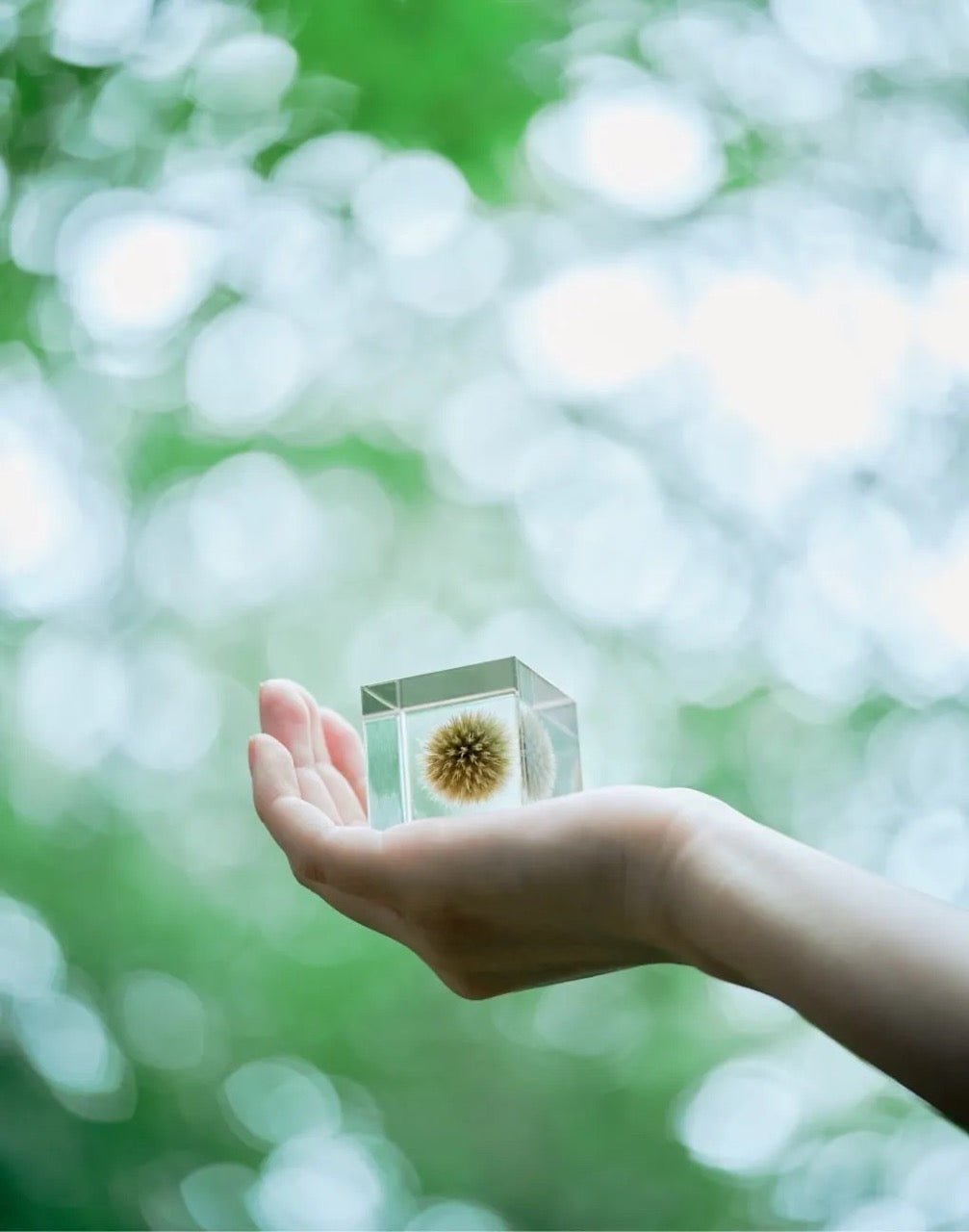Tenuguis have been part of Japanese life since the Heian Period. For non-historians, that's a golden age long ago when Kyoto was the nation's capital and Japanese literature, art and architecture was thriving - from 794 to 1185. In the Heian period, tenuguis were used to dry hands, wrap valuables and clean the home. Flash forward 500 years to the Edo period (1608 - 1868), tenugui cloths become more of a fashion accessory where men and women wear them around the head and neck to absorb sweat and protect the skin against the sun. The appeal of tenugui cloths from Heian till now is the same: the cloth becomes softer as you use it, and the colorful patterns are beautiful. It is a daily commodity and an understated piece of traditional handcraft that can be used in everyday life. It's proven timeless.
The process of making tenugui is a little less well-known, but no less spectacular. Tortoise tenuguis are made by 'Kamawanu'. They utilize the 'chusen' dyeing method where dye is *poured* into the cloth to seep all the way through. A method unique to Japan, chusen dyeing was established and developed in the Meiji period (1868-1912). The dye is hand-poured over the cloth using long thin spouts. This method ensures the dye won't collect inside the fibers and keeps the cloth from hardening, allowing it to remain absorbent with its quick-drying properties. It also allows the cloth to be reversible - both sides of the cloth share the same pattern and can be equally enjoyed.
Weather and humidity in the air greatly affect the finish of the tenugui, so of course everything is done by hand. With years of experience, skilled craftspeople expertly adjust the dyes and thickness of the starchy paste, depending on the day's temperature and weather. Is there anything else in your home right now where someone had to consider the day's weather to make?
After the cloths are dyed, they are individually washed by hand - to clean the cloth, to set the dye, and to familiarize the tenugui for future washing. This is similar to how Kamanwanu recommends our daily care of tenugui at home to maintain its longevity: hand-wash and hang-dry - it's incredibly easy to do. Although, after a few hand washings these cloths get thrown in the machine, and they'll still hold up.
In appreciation of Kamawanu's master craftspeople, we welcome you to watch them in action in this beautiful video:
Now are we ready to learn about our summer patterns?
Seasonal Summer Pattern #1: Japanese Shaved Ice ("kakigori")
The must-have summer dessert in Japan is 'kakigori'. More than ice cream, it's Japan's most popular dessert. Unlike shaved ice, kakigori ice has to be shaved like airy powdered snow, then drizzled with syrup in different flavors: strawberry, green tea, melon, cherry, and blue. Yes, blue is a flavor! It tastes like summer.
Summer Seasonal Pattern #2: Fireworks ("hanabi" - hana means flower and bi means fire)
From July to August, fireworks rain down on Japan for crowd pleasing entertainment. It's not unusual for several competing firework displays to be going on at once for heightened drama so that your Saturday night is literally 'lit'.
As a pattern, fireworks are popular for women's kimonos as bright, cheerful expressions of prosperity.
Summer Seasonal Pattern #3: Yo-Yo Tsuri
These sort of look like Easter eggs, but they're actually a popular childhood game seen at Japanese summer festivals called 'Yo-Yo Tsuri'. Decorated water balloons that are filled with air and water, tied off with a rubber band loop and placed inside a kiddie pool of water. Children gather to 'fish' out water-balloons using a "fishing pole" made of paper with a paper clip wire end before their paper breaks. It they catch the water balloon successfully, they win the water balloon which is like a yo-yo toy, bopping it with their hands over and over as their trophy.
Last but not least - Seasonal Summer Pattern #4: Goldfish ("kingyo")
Goldfish have been a popular Japanese symbol for hundreds of years. Their red color is seen to ward off evil, and gold (kin is 'gold' in Japanese' as well) is a symbol of wealth. Goldfish are soothing and cooling to look at as they swim elegantly in the water and have been kept to mentally cool down during the summer months. Kingyo are also a special part of summer festivals where children try their hand at using delicate paper nets to scoop up goldfish before their nets dissolve in the water. In this way, goldfish are year round but especially significant in the summer!











